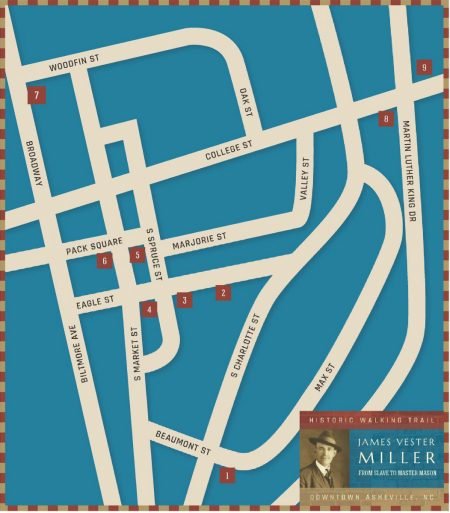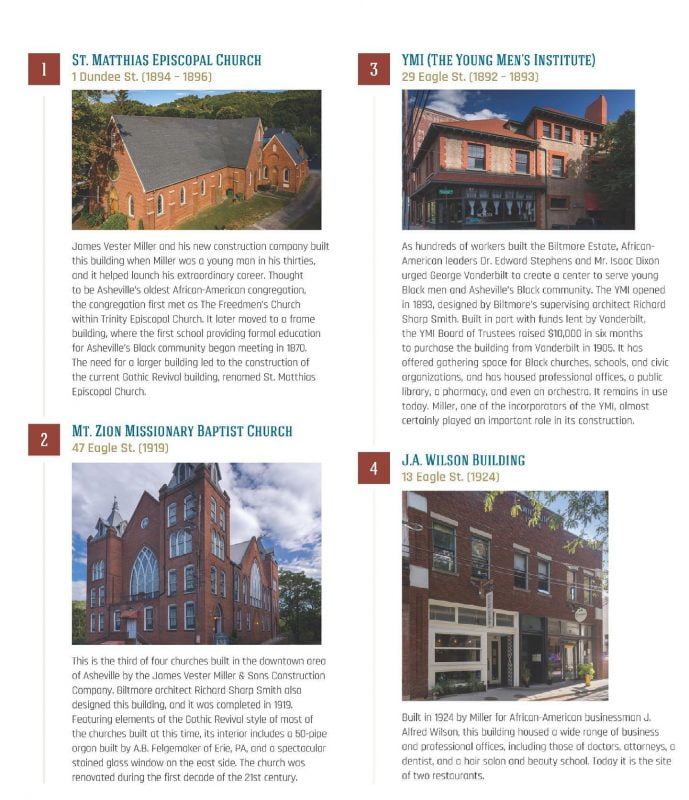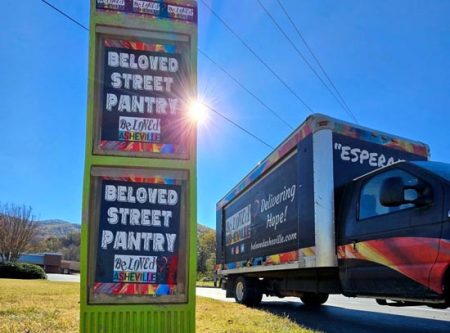James Vester Miller Historic Walking Trail
The historic contributions of renowned Black architect James Vester Miller come to life along a walking trail in Asheville.
In the late 19th and early 20th centuries, the segregated East End expanded to become a thriving community of homes, schools, churches, businesses, and nightclubs.
A master mason, James Vester Miller is one of Asheville’s African American pioneers. Miller built many of the historic brick buildings in downtown Asheville, including the YMI, Mt. Zion Missionary Baptist Church, St. Matthias Episcopal Church, and St. James AME Church.
James Vester Miller was born in Rutherford County, NC in 1860 to an enslaved mother and slave-master father. He had light skin and blue eyes. Miller worked for some of the best contractors in Asheville before starting his own company, Miller and Sons Construction Company. His brickwork caught the eye of Richard Sharp Smith, the supervising architect of the Biltmore House. Miller worked on many buildings Richard Sharp Smith designed.
Photographer Andrea Clark
Andrea Clark, granddaughter of James Vester Miller, talks about her vision to create a walking tour of her grandfather’s buildings, highlighting the important role that African Americans have played in building Asheville.
The walking tour focuses on Asheville’s “East End,” the African-American neighborhood closest to Pack Square. A virtual map is posted at jamesvestermiller.com/index.php/walking-trail/

Historic Walking Trail Map
#1: St. Matthias Episcopal Church, 1 Dundee St. Constructed in 1894-1896. Originally called Freedmen’s Church, it is believed to be the oldest African American congregation in Asheville. Miller not only constructed this beautiful gothic revival church, he attended it.
#2: Mt. Zion Missionary Baptist Church, 47 Eagle St. Constructed in 1919. This late Victorian Gothic designed church, constructed by Miller & Sons Construction Co., is home to Asheville’s largest African American congregation.
#3: YMI Young Men’s Institute, 29 Eagle St. Constructed in 1892-1893. A place for Black men to gather, collaborate, educate, rent space to grow their business or practice.
#4: J.A. Wilson Building, 13 Eagle Street. Constructed in 1924 by Miller for J. Alfred Wilson, a prominent African American businessman in Asheville.
#5: The Asheville Municipal Building, 100 Court Plaza. Constructed in 1924-1925. Originally the building housed the jail, and the police, fire, and health departments. The city’s Farmers Market occupied the lower level.
#6: James V. Miller & Sons Office, 22 S. Pack Square. Completed in 1906.
#7: Scottish Rite Cathedral and Masonic Temple, 80 Broadway St. Built in 1913. Designed by Richard Sharp Smith’s firm Smith & Carrier.
#8: St. James AME Episcopal Church, 44 Hildebrand St. Constructed in 1931. Until the church was completed, services were held in an abandoned street car barn.
#9: Hopkins Chapel AME Zion Church, 21 College Place. Constructed in 1910. Designed by architect Richard Sharp Smith.



For more information, please visit jamesvestermiller.com.





